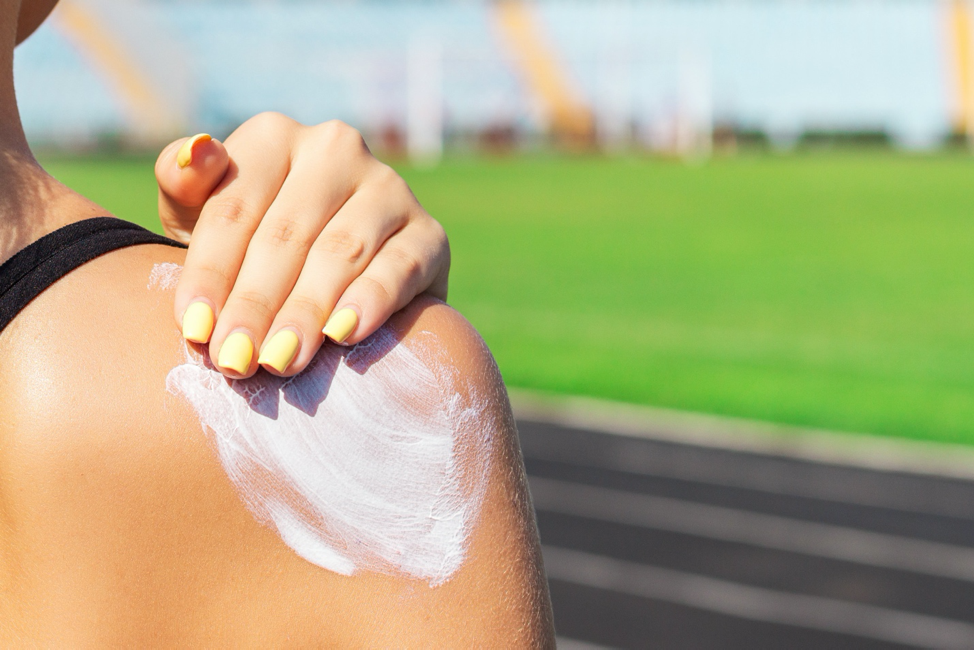Melanoma Risks
The Environmental Working Group (EWG) is an organization with a mission to empower people to live healthier lives in a healthier environment. In their recent report, they state that the number of Americans diagnosed with melanoma is rising each year, with the overall number of cases tripling since the 1970s. While the exact cause of melanoma is unknown, scientists have established that risk factors include family history, indoor tanning, fair skin, freckles, moles, ultraviolet radiation and severe sunburns. In addition, Skin Cancer Foundation research shows that a person’s risk for melanoma doubles if he or she has had more than five sunburns.
Due to COVID-19, it is predicted nations will be spending more time outdoors this summer than previous years. Whether it is camping, hiking, or just enjoying natural spaces, being outdoors allows for easier social distancing and a lower risk of contracting COVID-19. To properly prepare for summer 2020, though, it is important to do your research and stock up on the best sunscreen to reduce you and your family’s risk of melanoma.
Tips for Choosing a Safe Sunscreen
There are so many different brands of sunscreen and more are being added to the shelves every year! This can make nearly impossible to sort through all the labels and marketing tactics to pick the best sunscreen for you and your family. Luckily, EWG’s 2020 Guide to Sunscreens is available with science-backed information and guidance
- Don’t Assume Higher SPF is Better: According to the FDA, high-SPF labeled products are misleading and give a false sense of protection. They are also made with higher concentrations of chemicals and some of these ingredients penetrating the skin in high doses may pose health risks, including tissue damage and hormone disruption. Sunscreen with values of 30-50 SPF will offer adequate sunburn protection if applied correctly, even for people most susceptible to sunburn.
- Avoid Sunscreens with Oxybenzone: Alarmingly, research shows that just one application of chemical-based sunscreens allows those chemicals to be absorbed by the skin for days after the application. The most common sunscreen chemical, oxybenzone, is an allergen and a hormone disruptor that is a hazard to human health and has negative effects on the environment.
- Avoid Sunscreens with Vitamin A: A form of Vitamin A contained in sunscreens, retinyl palmitate, may actually speed up the development of skin tumors and lesions when applied to the skin exposed to direct sunlight.
- Look for Mineral Sunscreens: Mineral sunscreens are made with zinc oxide and titanium dioxide. These types of sunscreens rank higher in safety than chemical-based sunscreens and are generally recognized as safe and effective, as well as more stable in sunlight.
- Look for Fragrance Free: Fragrance free sunscreens contain less chemicals and are gentle on the skin.
- Scan the Inactive Ingredients: Avoid sunscreens that list “methylisothiazolinone” as an inactive ingredient or preservative. It is a skin sensitizer or allergen, and has been linked to causing severe skin allergies, especially in children exposed to the ingredient.
- Avoid Spray and Powder Products: There are concerns about the effectiveness of spray and powder sunscreens and it is believed that they may cause irreversible damage if inhaled deeply into the lungs. Until further testing is done on these products, it is best to avoid them all together.
To serve as a starting point in choosing a safe sunscreen that works for you and your family, be sure to check out the complete EWG’s 2020 Guide to Sunscreens. They break down top sunscreen choices into several categories such as beach and sport sunscreens, kid’s sunscreens, mineral sunscreens and non-mineral sunscreens.
Additional Tips for Preventing Sunburn
Scientists do not know for certain if sunscreen alone can prevent melanoma, so EWG recommends following these extra precautions:
- Cover Up: Hats, shirts, shorts, and pants protect the skin from harmful UV rays. If you will be out in the sun for an extended amount of time, such as hiking, consider wearing lightweight, moisture wicking long sleeves and hiking pants for the most coverage. Some clothing options may also have UPF protection.
- Wear Sunglasses: Sunglasses are so much more than an accessory. Choose a high-quality pair with UV protection and wear them anytime you are out in the sun. They keep you from squinting, protect your eyes, and reduce your risk of developing cataracts.
- Plan Ahead: 10am-2pm are the peak burn hours, so whenever possible, plan your activities for the morning or evening to avoid being exposed during this time.
- Spend time in the shade: Find naturally shady areas to relax in and if you can’t find any, use an umbrella or a tent to create your own.
- Reapply Often: If you will be out in the sun, make sure to reapply sunscreen often!
- Think Smart: Avoid tanning beds, sun lamps, tanning pills, or any tan enhancing products as they are known to increase your risk of skin damage.



